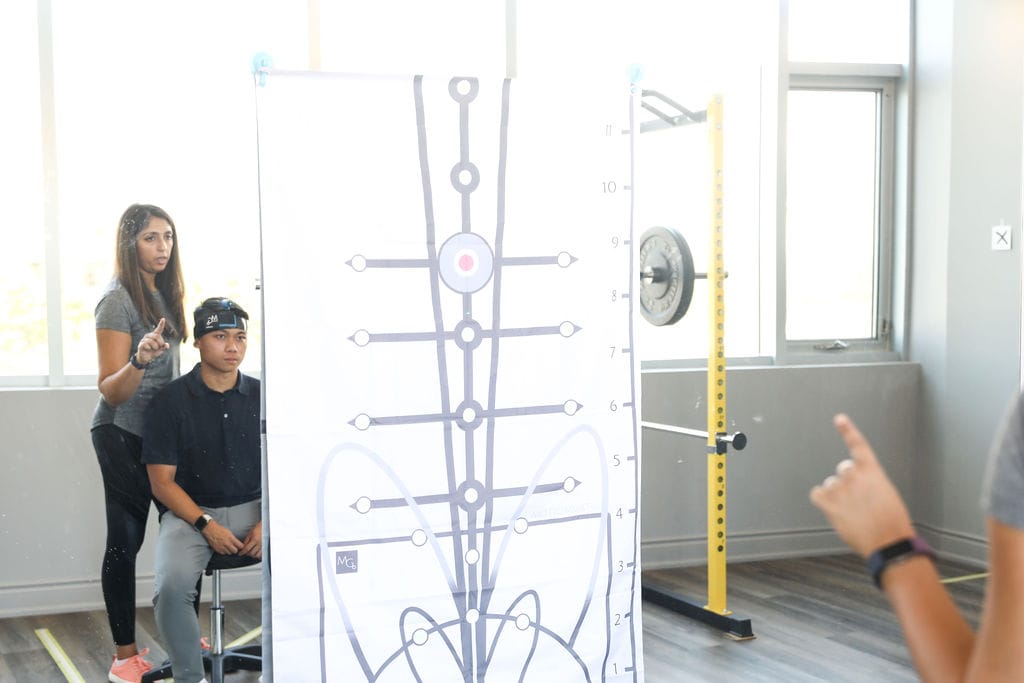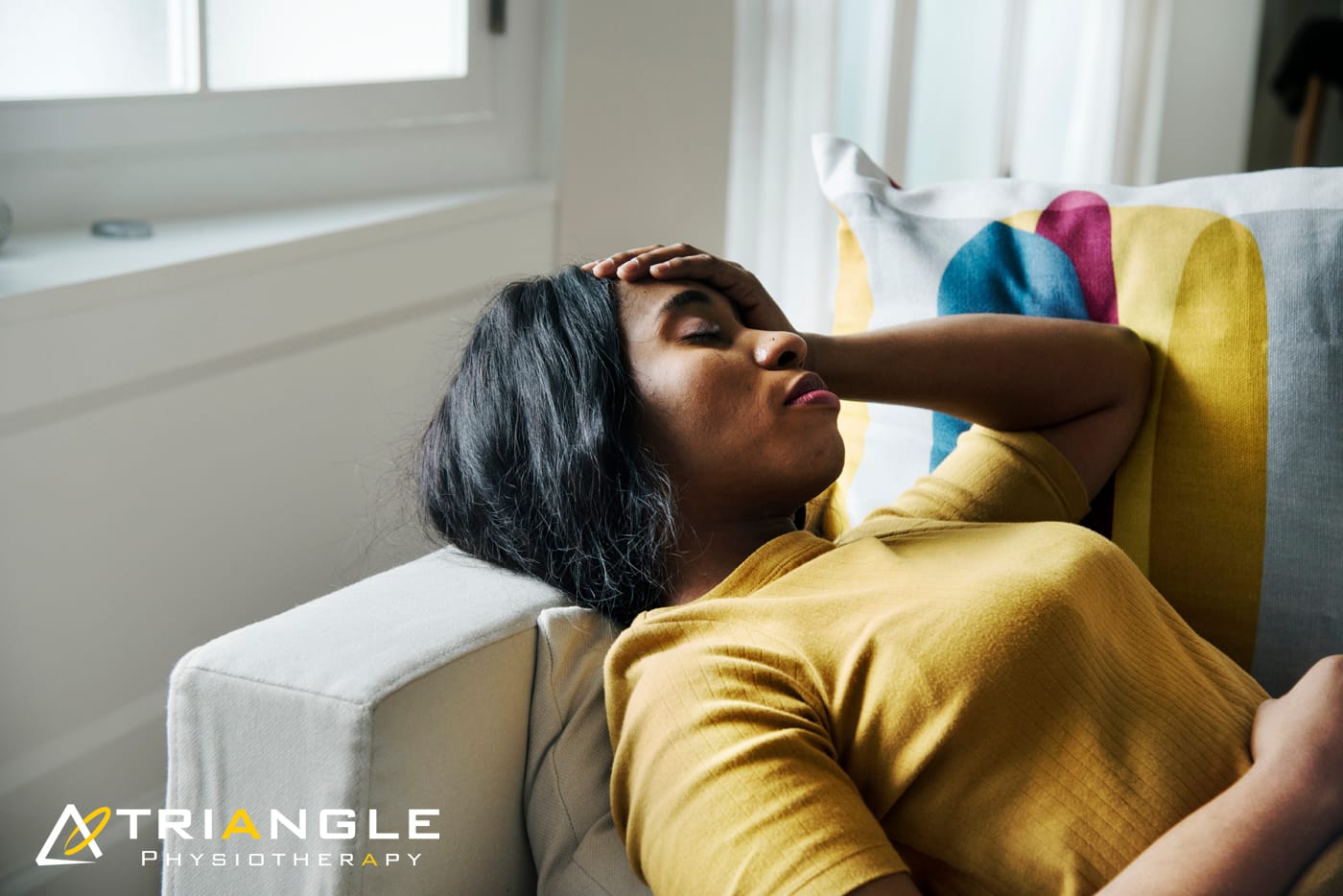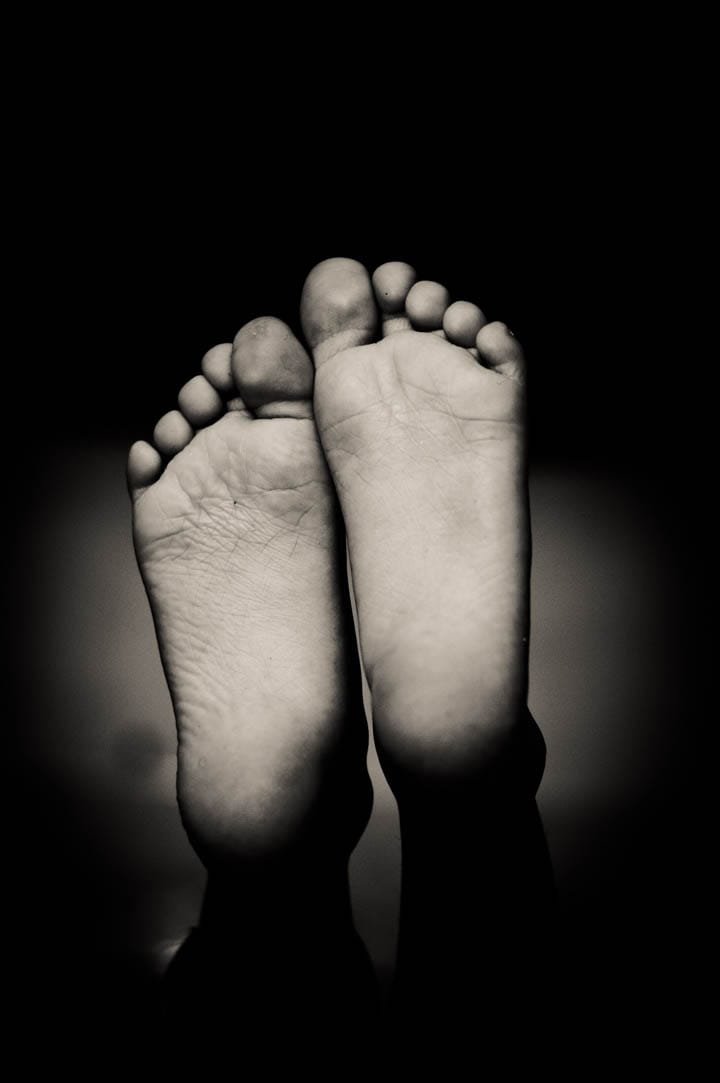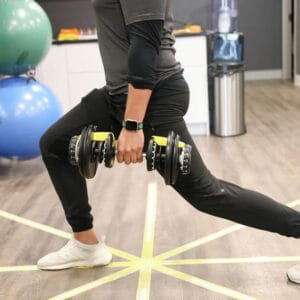Vestibular rehabilitation therapy (VRT) is a specialized form of therapy designed to treat problems related to the vestibular system, which is responsible for our sense of balance and spatial orientation. It is commonly used to address issues such as dizziness, vertigo, imbalance, and other symptoms associated with vestibular disorders.

What are the symptoms of Vestibular Dysfunction?
The symptoms of vestibular disorder are:
- Dizziness: This is a sensation of lightheadedness, unsteadiness, or feeling like you or your surroundings are spinning (vertigo). Vertigo can be intense and can lead to nausea and vomiting in some cases.
- Imbalance and unsteadiness: Problems with balance and coordination are common in vestibular dysfunction. Individuals may feel off-balance, have difficulty walking in a straight line, or experience a tendency to veer or fall to one side.
- Nausea and vomiting: The sensation of vertigo can trigger feelings of nausea, which may lead to vomiting in some cases.
- Visual disturbances: Vestibular dysfunction can affect vision, causing blurring, difficulty focusing, or sensitivity to light and movement. Visual disturbances can worsen dizziness and disorientation.
- Tinnitus: Some individuals with vestibular dysfunction may experience ringing, buzzing, or other abnormal sounds in their ears (tinnitus).
- Sensitivity to motion: Motion sensitivity or an increased sensitivity to movement, known as motion intolerance, is common in vestibular dysfunction. Everyday activities like riding in a car, using escalators, or even watching fast-paced visual stimuli may trigger symptoms.
- Cognitive difficulties: Vestibular dysfunction can sometimes lead to problems with concentration, memory, and cognitive processing. Some individuals may experience difficulty thinking clearly or have a foggy or spaced-out feeling.
- Fatigue and anxiety: The physical and emotional stress caused by vestibular dysfunction can lead to feelings of fatigue and exhaustion. Anxiety and depression can also accompany vestibular disorders due to their impact on daily functioning and quality of life.
What is the Vestibular System?
The vestibular system is a complex sensory system located within the inner ear. It plays a crucial role in maintaining balance, spatial orientation, and coordination of head and eye movements. It is made up of:
- The vestibular organs
- The vestibular nerve
- The brainstem and the cerebellum
The vestibular system works in close conjunction with the visual system and proprioceptive system (sensory input from muscles and joints) to provide a comprehensive sense of spatial orientation and balance. It helps us maintain stable posture, make coordinated movements, and adjust our gaze to keep objects in focus during head and body movements.
When the vestibular system malfunctions or becomes disrupted, it can result in various vestibular disorders, leading to symptoms such as dizziness, vertigo, and imbalance. Vestibular rehabilitation therapy, as mentioned earlier, aims to address these issues by helping the brain adapt to vestibular dysfunction and restore normal function.
What types of conditions can benefit from Vestibular Rehabilitation Therapy?
Vestibular rehabilitation therapy (VRT) can be beneficial for various conditions that involve vestibular dysfunction or impairments in balance and spatial orientation. Some of the conditions that can benefit from VRT include:
- Benign Paroxysmal Positional Vertigo (BPPV): BPPV is a common vestibular disorder characterized by brief episodes of vertigo triggered by specific head movements. VRT can include canalith repositioning procedures, such as the Epley maneuver or the Semont maneuver, which aim to reposition displaced calcium crystals in the inner ear and alleviate symptoms.
- Vestibular Neuritis: Vestibular neuritis is an inflammation of the vestibular nerve typically caused by a viral infection. It results in severe vertigo, dizziness, and imbalance. VRT can help improve balance, reduce dizziness, and promote compensation for the damaged vestibular system.
- Labyrinthitis: Labyrinthitis is an inflammation of the inner ear labyrinth, often caused by a viral or bacterial infection. It leads to vertigo, dizziness, hearing loss, and sometimes ringing in the ears (tinnitus). VRT can aid in managing the dizziness and balance issues associated with labyrinthitis.
- Ménière’s Disease: Ménière’s disease is a chronic condition characterized by recurring episodes of vertigo, fluctuating hearing loss, tinnitus, and a feeling of fullness in the ear. VRT can be beneficial in managing dizziness and improving balance control during and between attacks.
- Post-Concussion Syndrome: After a concussion or traumatic brain injury, vestibular dysfunction can occur, leading to symptoms such as dizziness, imbalance, and difficulty concentrating. VRT can help address these symptoms, promote recovery, and improve overall function.
- Age-related Balance Disorders: As people age, they may experience age-related changes in the vestibular system, leading to balance problems. VRT can help older individuals improve their balance, reduce the risk of falls, and enhance their overall quality of life.
- Mal de Débarquement Syndrome (MdDS): MdDS is a disorder characterized by a persistent sensation of rocking or swaying, typically following a prolonged exposure to motion, such as a boat or plane ride. VRT can be used to help the brain readapt and reduce the sensation of motion.
- Unilateral or Bilateral Vestibular Hypofunction: When there is a significant reduction in vestibular function on one or both sides, it can result in balance deficits and dizziness. VRT can assist in compensating for the reduced vestibular input and improve balance control.
It’s important to note that the specific treatment approach may vary depending on the individual’s condition, symptoms, and the expertise of the healthcare professional providing the therapy. A qualified vestibular specialist or physiotherapist trained in vestibular rehabilitation can assess the individual’s needs and develop a tailored treatment plan for optimal outcomes.
Can Vestibular Rehabilitation Therapy help me?
You can certainly benefit from vestibular physiotherapy even if your condition is chronic. Through a variety of exercises and techniques, vestibular physiotherapy aims to enhance balance, reduce dizziness, and improve overall function of the vestibular system. With the help of various exercises and techniques vestibular physiotherapy can help reduce your dizziness, improve your balance and enhance the quality of your life.
Vestibular Physiotherapy Near Me
Click HERE to book an appointment with a vestibular rehabilitation physiotherapist at one of our eight locations.
- Physiotherapy Etobicoke – Triangle Physiotherapy Etobicoke
- Oakville Physiotherapy Clinic – Triangle Physiotherapy Oakville
- Physiotherapy North York – Triangle Physiotherapy North York
- Mississauga Physiotherapy Clinics – Triangle Physiotherapy Mississauga
- Downtown Physiotherapy Clinics – Triangle Physiotherapy King West
- Uptown Physiotherapy Clinics – Triangle Physiotherapy Lawrence Park
- Physiotherapy Clinic Downtown Toronto – Triangle Physiotherapy Queens Quay
- Physiotherapy Clinics Mississauga – Triangle Physiotherapy Erin Mills
“Vestibular Rehabilitation Therapy (VRT) is a specialized form of physiotherapy designed to alleviate symptoms of vertigo and dizziness. Triangle Physiotherapy offers expert VRT services across the GTA, including Physiotherapy in Etobicoke, Oakville, North York, Toronto, Lawrence Park, Queens Quay, Erin Mills, Mississauga, and Liberty Village. Our experienced physiotherapists can help you regain balance and improve your quality of life through tailored vestibular rehabilitation programs.”




